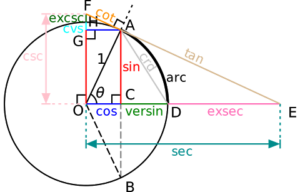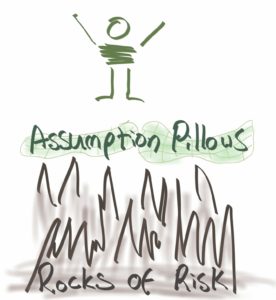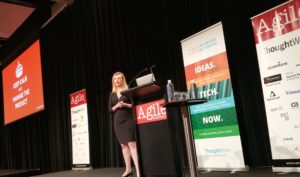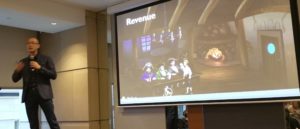Have you ever tried to do a nice thing that went completely pear shaped ?
Have you ever said something that was taken out of context ?
These are the unforeseen consequences, that surround us every day of our lives. The basic fact is that every interaction is open to misinterpretation. Sounds absurd but I propose it’s painfully true. The fact no one can read your mind or understand precisely what you mean is founded in the variety of life experiences we all have. We all have a “mental rule book” that we inherit/adapt/devise as we live our lives, moulded by our experiences and more importantly, our interpretation and responses to them.
Management and the unintended and invisible consequences
We are a modern culture of goal driven and result focused beings, rushing towards completion. The result is that there is entry level and management and the erosion of the middle.
The loss of the middle
The rush to completion culture, that is modern life, results in an erosion of the middle. Think about it, there is a devaluing and almost loss reflected by the middle layers of our work place and lives. This doesn’t mean that the middle layers don’t exist anymore because they do and if anything there are more of them. What has happened is the middle has expanded all while an erosion of its substance/quality has occurred. The middle has become a waiting room with no intrinsic value, just a place on the way to somewhere else. We are all trying to be/get somewhere else and therefore are focused forward and not in the present. It’s like people who are so busy, thinking of the next thing say, that they actually aren’t listening. They are actually, just frantically scanning /searching for the next sound bite to hang their comments upon. This type of hollowness is symptomatic of the erosion of the middle. This layer has become what I call “fluff” taking up a lot of room but with no real substance. The term busy work, tends to be made for this middle layer. So why has this happened?
Apprentice easy to learn hard to master
I remember buying a backgammon set when I was very young which had an instruction booklet with it. The instructions/rules were rather simple but it ended with this statement “easy to learn but hard to master” this line always resonated with me because I was a moratore’s son and knew that most things are easy to learn but really hard to master. The mastery of a skilled task takes time, time to encounter all possibilities and time to develop responses and reactions to them.
How many of us have learnt things, passed the exams and only years later, does the penny, actualy drop? Only then do we see for the first time what the concepts heart or the true nature of the knowledge was. Maths is littered with these sort of realisations, trigonometry is one.

I remember being told by a professor at university, when I was demonstrating and discussing with him how we learn and teach. He replied you only really learn something when you have to teach it, when you first learn anything, it is really just a getting to know you exercise, like a first date. This introduction allows you to pass an examine but really only superficially introduces you to the concepts involved. This initial exposure familiarises you with specific terms and basic concepts, so when you actually need to know and teach that lesson you can find the solution more easily and make it part of you.
The act of learning is greatly enhanced by teaching, why? The answer is simplicity itself. Everyone sees and exists in the world differently, these differences mean that when you learn something and try to understand it, you frame it in familiar and logical steps, for you anyway. When others try to learn and understand the same lesson they will also try to make sense of it according to their life view and understandings. So it’s obvious that when teaching you will find a continuum of how others perceive and try to understand the lesson. Some will think very much like yourself, others slightly differently and still others will need vastly different points of reference to come to terms with and understand the lesson. Good teachers must and can rephrase and explain things in a variety of ways, this necessity is what makes teaching the best way to learn because it stretches us to examine what we “know” from other perspectives and points of view.
The unforeseen consequence of teaching is you learn much more completely. This takes time and understanding.
So why do we rush to “completion” ?
Our modern culture is densely populated with 5 year plans, strategies, expectations, milestones and the list goes on and on. Every minute of every day in our lives is under constant scrutiny both internally and externally. We must develop and attain certain milestones within culturally expected time frames or we seem to be ineffectual or below the curve.
There is no room or time for mastery, we learn and we move on. The modern view is that “the now” is only a stepping stone to a future goal. The worth of the journey seems lost to us and only the allure of promotion and success is our goal. We have become tradesmen, with no patience or will to develop into master craftsmen. Society accepts the passable, to feed instant gratification and speed. The respect and value of craftsmanship and quality has become subservient to efficiency and greed. The attention span of the modern world is framed by sound bites and popularity poles.
Bread and Circus rule the day, with distractions and being seen as cutting edge, objectives in themselves.
Think about your workplace, how many times do we heard “they’ve been in that dead end job for years”, “they have no ambition” these statements maybe true but only partially so. The fact maybe that the worker derives get pleasure and satisfaction in developing their skills beyond acceptable and into the realm of mastery. Yet we don’t acknowledge this, we only see the same person in the same role, and evaluate this as “what is wrong with them?”
The absolute irony I noted while I was working IT, no matter how expert and skilled the programers were they were never “appreciated” as much as management. In fact it was sad to watch true masters of coding, having to become management so they could earn more money and get some appreciation. The actual engine which kept the company in business was devalued because they were content applying their craft. The ironic topper to this observation, was that graduates who had studied coding, just used coding to get a foot into a company, so they could quickly move into the management streams. Does the saying “too many Chiefs and not enough Indians”, spring to mind.
Words of wisdom from my father an old muratore “It takes hardly any extra effort to do a good job than a bad one.” This is very true, when you actually think about it, how much time, effort and money has been flushed down the toilet by bad projects with little or nothing to show for it?
The unforeseen consequence of our modern society is we rush to our goals and loose sight of the reasons and real benefits why we started in the first place.
There seems to be a disconnect between the limbs and the governing body, the brain. The “new talent” needs mentors to help and aid learning of best practises, while the “wiser” and older ones need the vitality of youth to physically accomplish the task and encourage new exploration into possibilities.
Companies are run like the military, chain of command, need to know and follow orders. They should be run as a biological system or organism, where there are feedback systems with more than one way to elicit change, the nervous system for rapid responses (management) and the endocrine system for slower invasive moderation (cultural).












